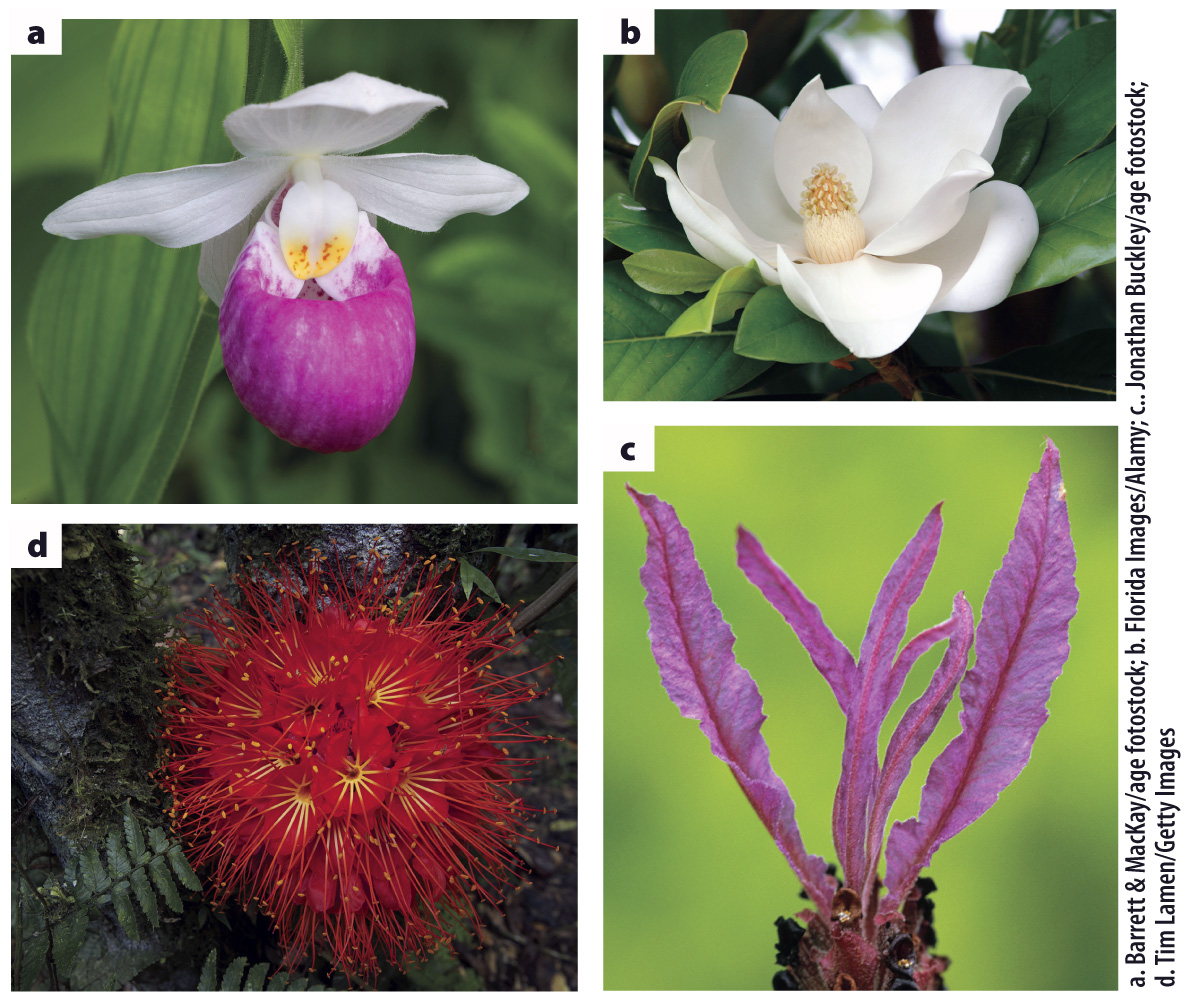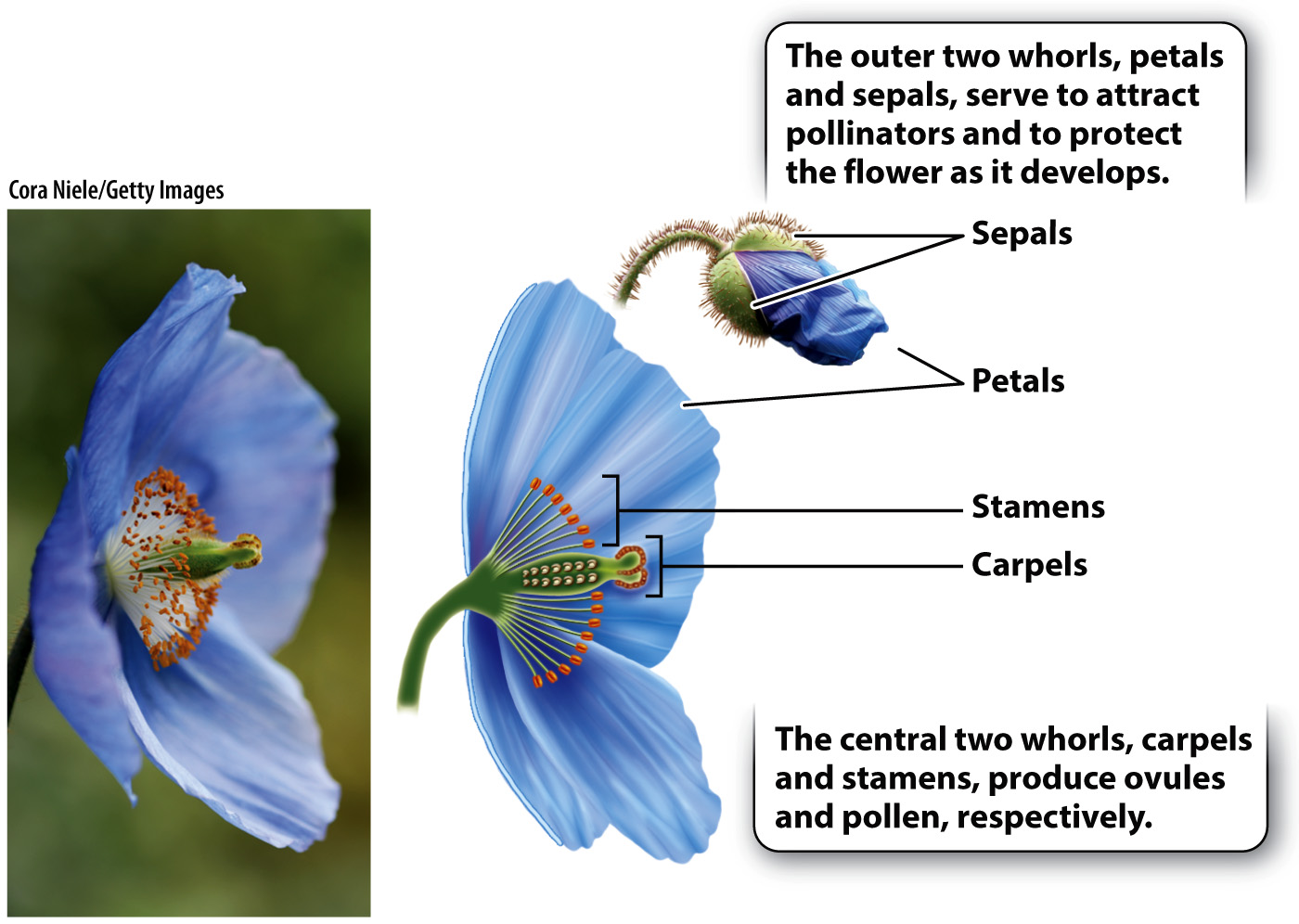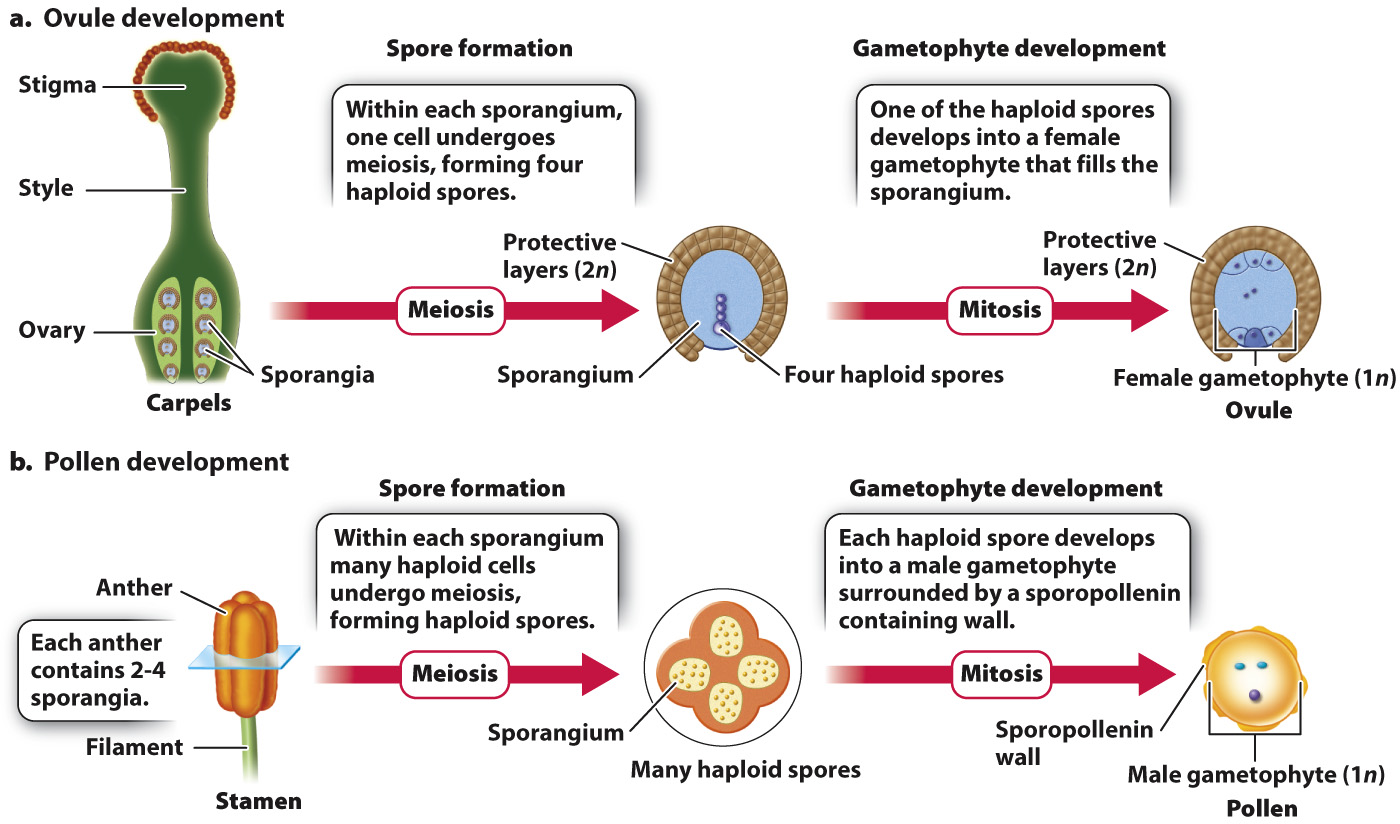Flowers are reproductive shoots specialized for the transfer and receipt of pollen.
Angiosperms are seed plants and their life cycle is similar to that of pine trees (see Fig. 30.7), with a few important differences. One of these differences is that in angiosperms pollen and ovules are produced in a single structure—

629
Flowers are spectacularly diverse in size, color, scent, and form, but they all have the same basic organization: concentric whorls of floral organs (Fig. 30.12; Chapter 20). The outer whorls consist of sepals and petals, while the inner whorls are made up of pollen-

630
Carpels are modified leaves that have become folded over and sealed along the edges to form a hollow chamber. Sporangia are produced on the inner surface of this cavity (Fig. 30.13a). Within each sporangium a single cell undergoes meiosis, forming four haploid spores, one of which develops into a female gametophyte. Recall that an ovule consists of a female gametophyte surrounded by protective tissues and that ovules, when fertilized, develop into seeds. The fact that the ovules develop within the carpel is what gives rise to the name “angiosperm,” which is from Greek words meaning “vessel” and “seed.” In gymnosperms, the ovules are not enclosed, and their name, again from the Greek, literally means “naked seeds.”

Each flower produces one or more carpels (typically 3 to 5, but sometimes more than 20), but because the carpels are often fused, there may be only a single structure at the center of the flower. At the base is the ovary in which one to many ovules develop. The ovary protects the ovules from being eaten or damaged by animals, but also makes it impossible for pollen to land directly on the surface of the ovule. To reach the ovules, pollen must land on the stigma, a sticky or feathery surface at the top of the carpel(s), and grow down through the stalklike style. The female gametophytes produce chemicals that guide the pollen tubes toward unfertilized ovules. Because animal pollinators can deposit many pollen grains at once, the fastest growing pollen tubes are the most likely to deliver sperm to an egg. In some plants, the style can be more than 10 cm long—
Immediately surrounding the carpels are the pollen-
The outer whorls of the flower produce neither pollen nor ovules but instead contribute to reproductive success in other ways. Most flowers have two outer whorls, of which the outermost is made up of sepals. Sepals, which are often green, encase and protect the flower during its development. In contrast, petals are frequently brightly colored and distinctively shaped. Their role is to attract and orient animal pollinators. In addition to serving as visual cues, petals in many flowers produce volatile oils. These are the source of the distinctive odors, some pleasant, some decidedly not, that many flowers use to advertise their presence to pollinators.
631
Quick Check 5 What is the name and function of the structures in each whorl of a flower?
Quick Check 5 Answer
A flower consists of four whorls of organs: From outside in, they are the sepals, petals, stamens, and carpels. The sepals generally protect developing flowers; the petals commonly serve to attract pollinators; the stamens produce pollen; and the carpel protects the ovules inside that develop into seeds following fertilization.